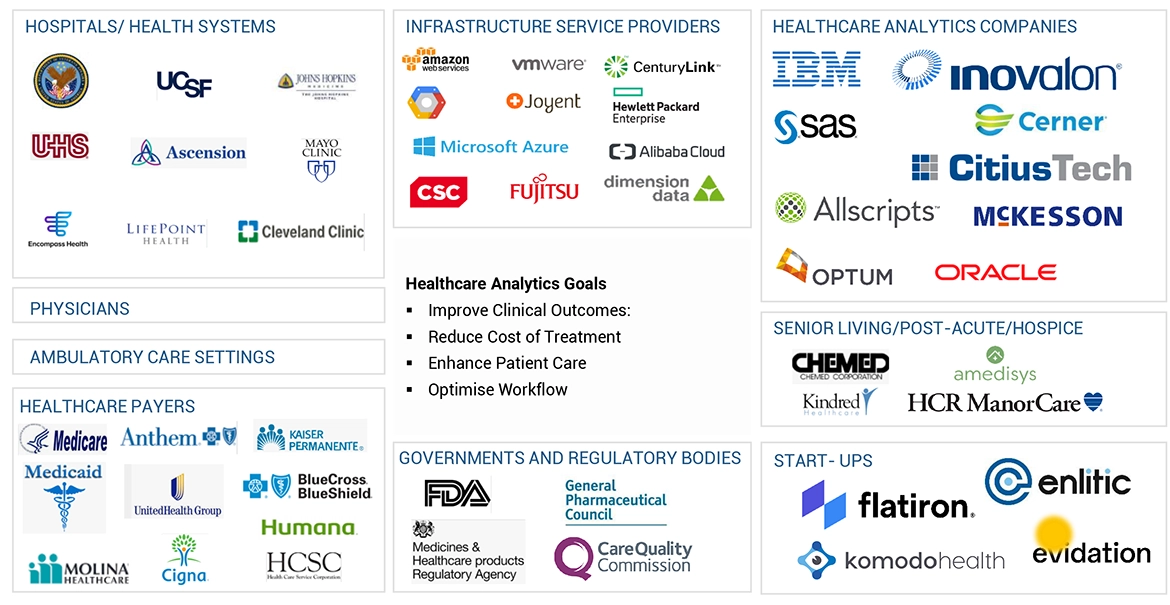In the rapidly evolving landscape of healthcare, the integration of data analytics has become a pivotal force driving efficiency, enhancing patient outcomes, and reducing costs. The global healthcare analytics market is experiencing significant growth, propelled by technological advancements and an increasing emphasis on data-driven decision-making. This article explores the current trends, market drivers, and growth opportunities within the healthcare analytics sector, providing valuable insights for industry stakeholders.
Market Overview
The global healthcare analytics market was valued at approximately USD 36.29 billion in 2023 and is projected to reach USD 133.19 billion by 2029, reflecting a compound annual growth rate (CAGR) of 24.3%. This robust expansion is driven by factors such as the widespread adoption of electronic health records (EHRs), the growing demand for cost-effective healthcare solutions, and regulatory mandates aimed at improving value-based care. Additionally, the integration of advanced technologies like generative artificial intelligence (AI) into healthcare analytics systems is accelerating market growth.

Key Market Segments
The healthcare analytics market can be segmented based on type, application, end-user, and region:
- By Type:
- Descriptive Analytics: Focuses on interpreting historical data to identify trends and patterns.
- Predictive Analytics: Utilizes statistical models and machine learning techniques to forecast future outcomes.
- Prescriptive Analytics: Recommends actions based on data analysis to achieve desired outcomes.
- By Application:
- Clinical Analytics: Enhances patient care by analyzing clinical data to support decision-making.
- Financial Analytics: Aims to improve financial performance through cost analysis and revenue cycle management.
- Operational and Administrative Analytics: Optimizes operational efficiency and resource allocation within healthcare organizations.
- By End-User:
- Healthcare Providers: Hospitals, clinics, and other medical facilities utilizing analytics to improve patient care and operational efficiency.
- Healthcare Payers: Insurance companies and other entities analyzing data to manage costs and assess risk.
- Pharmaceutical Companies: Employ analytics for drug discovery, development, and market analysis.
- By Region:
- North America: Dominates the market due to advanced healthcare infrastructure and significant investments in healthcare IT.
- Europe: Exhibits substantial growth driven by the increasing adoption of telehealth services and integration of big data into healthcare.
- Asia-Pacific: Anticipated to witness the highest growth rate, attributed to a large and growing patient population, increasing need for innovative therapies, and rising healthcare IT infrastructure investments.
Market Drivers
Several factors are propelling the growth of the healthcare analytics market:
- Government Initiatives to Increase EHR Adoption: Substantial financial incentives and policies promoting the adoption of EHRs have led to widespread implementation, thereby increasing the demand for analytics solutions to interpret and utilize the vast amounts of data generated.
- Rising Demand for Data-Driven Decision-Making: Healthcare organizations are increasingly relying on data analytics to inform clinical decisions, optimize operations, and enhance patient outcomes.
- Cost Management and Operational Efficiency: Analytics solutions enable healthcare providers to identify cost-saving opportunities and improve resource allocation, leading to more efficient operations.
- Regulatory Mandates for Value-Based Care: Regulations emphasizing quality over quantity in healthcare services are encouraging the adoption of analytics to measure performance and outcomes effectively.
Growth Opportunities
Emerging trends and opportunities within the healthcare analytics market include:
- Integration of Advanced Technologies: The incorporation of AI and machine learning algorithms into analytics platforms enhances predictive capabilities, allowing for more accurate forecasting and personalized patient care.
- Expansion in Emerging Markets: Developing regions present significant growth potential due to increasing healthcare expenditures and the adoption of digital health solutions.
- Real-World Evidence and Population Health Management: Utilizing analytics to assess real-world data supports population health initiatives and the development of targeted interventions.
- Cloud-Based Analytics Solutions: The growing adoption of cloud technology facilitates scalable and flexible analytics solutions, enabling organizations to manage and analyze large datasets effectively.
Challenges
Despite the positive outlook, the market faces certain challenges:
- Data Breach Concerns: The increasing volume of sensitive health data raises concerns about privacy and security, necessitating robust measures to protect against breaches.
- Shortage of Skilled Personnel: There is a growing demand for professionals with expertise in data analytics and healthcare, highlighting the need for specialized training and education programs.
- Data Integration Issues: Integrating data from diverse sources and formats remains a complex task, requiring standardized protocols and interoperability solutions.
Competitive Landscape
The healthcare analytics market is characterized by the presence of several key players focusing on research and development to introduce innovative products. Companies are engaging in strategic initiatives such as mergers, acquisitions, and partnerships to strengthen their market positions and expand their product offerings.
Conclusion
The healthcare analytics market is poised for substantial growth, driven by technological advancements, government initiatives, and the increasing need for data-driven decision-making in healthcare. Industry stakeholders should focus on leveraging emerging opportunities, addressing challenges related to data security and integration, and fostering collaborations to capitalize on this dynamic market.
